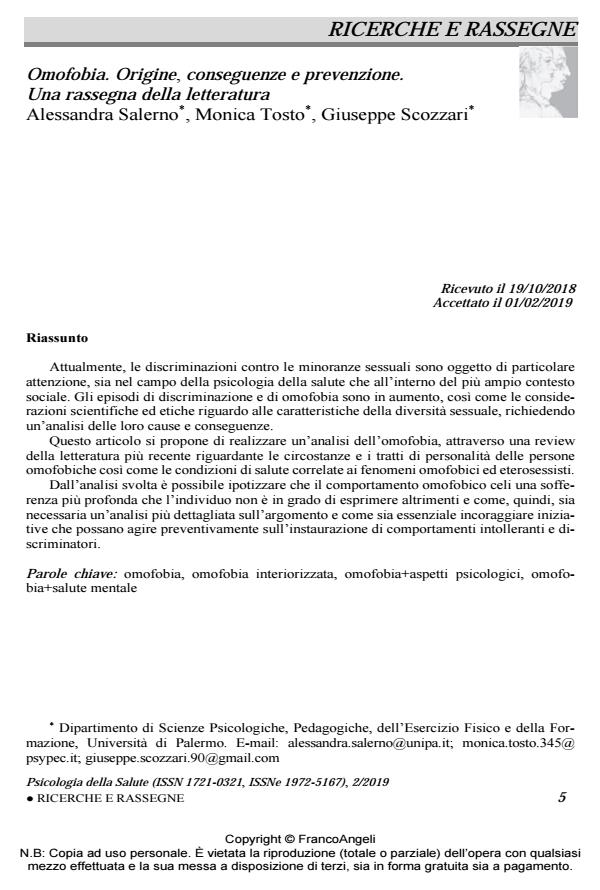Homophobia. Origins, consequences and prevention. A review of the literature
Journal title PSICOLOGIA DELLA SALUTE
Author/s Alessandra Salerno, Monica Tosto, Giuseppe Scozzari
Publishing Year 2019 Issue 2019/2
Language Italian Pages 23 P. 5-27 File size 325 KB
DOI 10.3280/PDS2019-002001
DOI is like a bar code for intellectual property: to have more infomation
click here
Below, you can see the article first page
If you want to buy this article in PDF format, you can do it, following the instructions to buy download credits

FrancoAngeli is member of Publishers International Linking Association, Inc (PILA), a not-for-profit association which run the CrossRef service enabling links to and from online scholarly content.
Today particular focus is given to discrimination against sexual minorities both within the specific field of psychological health as well as within a broader social context. In addition to scientific and ethical considerations regarding the characteristics of sexual diversity, incidents of discrimination and homophobia are on the rise, highlighting their causes and consequences. This article aims to carry out an analysis on homophobia through a review on current liter-ature concerning the circumstances and personality traits of homophobic people as well as their health conditions related to homophobic and heterosexism phenomena. From the review carried out it is possible to hypothize how homophobic behaviour can conceal a deeper suffering that the individual is unable to otherwise express and how, there-fore, a more detailed analysis on the matter is urgently needed and how it is essential to en-courage initiatives that may act on the establishment of intolerant and discriminatory behav-iour.
Keywords: Homophobia, internalized homophobia, homophobia + psychological aspects, homophobia + mental health
Alessandra Salerno, Monica Tosto, Giuseppe Scozzari, Omofobia. Origine, conseguenze e prevenzione. Una rassegna della letteratura in "PSICOLOGIA DELLA SALUTE" 2/2019, pp 5-27, DOI: 10.3280/PDS2019-002001